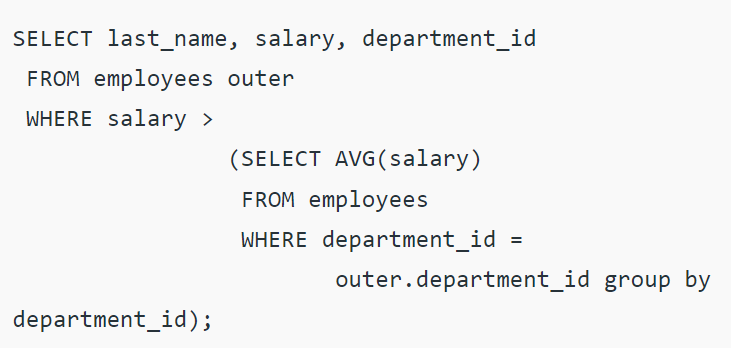I googled correlated subquery, and it gave me the below example. However, it appears in the outer query, that department id will be determined by a dynamic salary, which in turn, is determined by a relationship between department_id in the outer query and department_id in the inner query. This seems like very circular logic. How can both department_ids have a relationship when salary is not yet determined?





2
Answers
You are confusing the order of operations. The correlated subquery is essentially a join; in principle it will be performed for all rows (though in practice there is often some optimization) before the where conditions are applied. And joins (again, in principal) execute first and find all the combined source rows that then are filtered by where conditions, then grouped by group bys, etc.
Essentially that’s what a correlated subquery is: a subquery that doesn’t resolve without information from the outer rows.
Does the equivalent
also confuse you?
Think of this pseudocode:
So the subquery calculates the average salary of all employees in the same department as the employee being examined in the outer query. To do this, it needs to filter by the
outer.department_id.The example is meant to demonstrate that in a correlated subquery, the subquery is not evaluated before the outer query. It must be evaluated repeatedly, once for each row of the outer query, because it will be compared to each respective employee’s salary in turn.
The example query actually has a stylistic mistake, in my opinion. The
GROUP BY department_idis superfluous, because by definition the subquery matches only onedepartment_ideach time it runs. So there will only be one group in each evaluation of the subquery regardless.